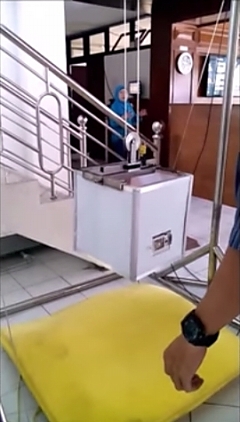This is an archive of information released in the past.
Disclaimer: It may contain broken links or outdated information. Some parts may not function in current web browsers.
*Visit https://humans-in-space.jaxa.jp/en/ for the latest information.

Microgravity research trend in Indonesia
A report on the plant's response to the gravity by a research team from the Bandung Institute of Technology has been published on line recently.*1 They have built a clinostat, an apparatus with slowly revolving stages, to treat plants with continuously changing gravitational direction. Many plants are known to show responses against clino-rotation similar to those against microgravity. They analyzed growth of tomato and mung bean in relation to the environmental factors such as light, moisture and gravity.
For outreach, a simple drop tower was built by engineers in the National Institute of Aeronautics and Space of Indonesia (LAPAN) Space Science Center, in order to spread the understanding of basic physical phenomena under microgravity. A capsule of 40cm in height, 20cm in width and 35cm in depth is hoisted to the top of the 4m tower. Releasing the electromagnetic clutch, microgravity state during a free fall for about 0.87 second is captured with a camera capable of high-speed video recording attached to the capsule.
Microgravity is not familiar to the most of us. It is expected that these activities will arouse interest of scientists and engineers, who may contribute to productive utilization of Kibo facilities for the Asia-Pacific region.
(*1) Swandjaja, L. et al. Trans. Japan Soc. Aeronaut. Space Sci. Aerospace Tech. Japan. Vol. 12 (2014) No. ists29 p. Th_5-Th_10


Figure: Drop tower at LAPAN (courtesy of LAPAN)
| Copyright 2007 Japan Aerospace Exploration Agency | Site Policy |
